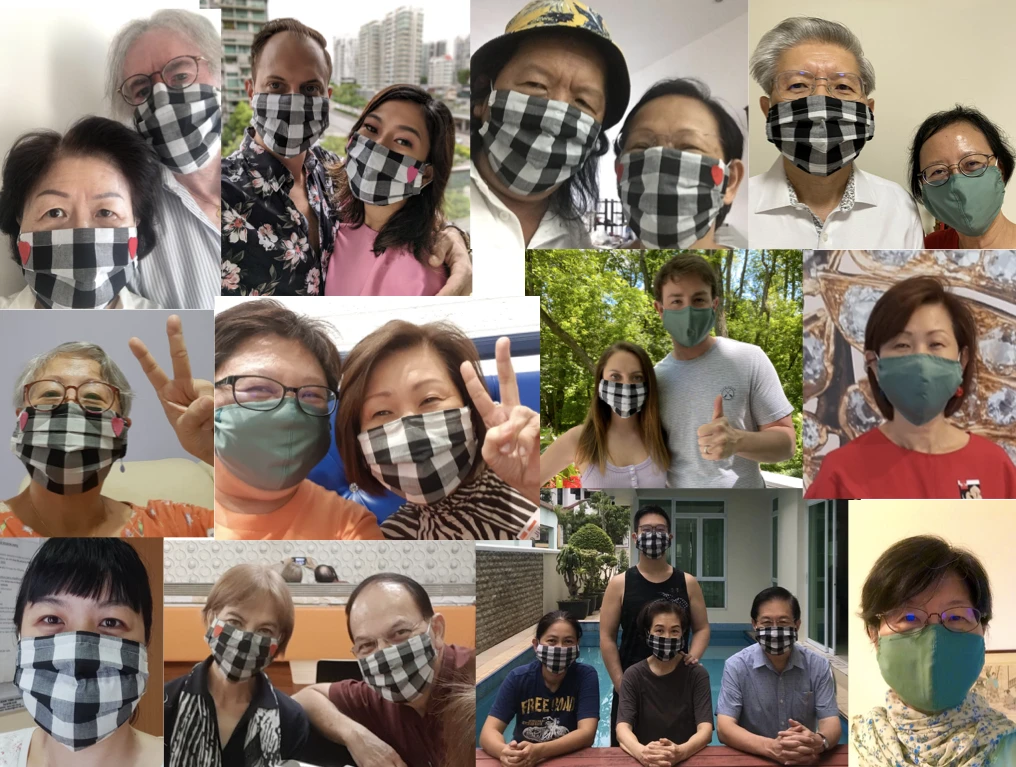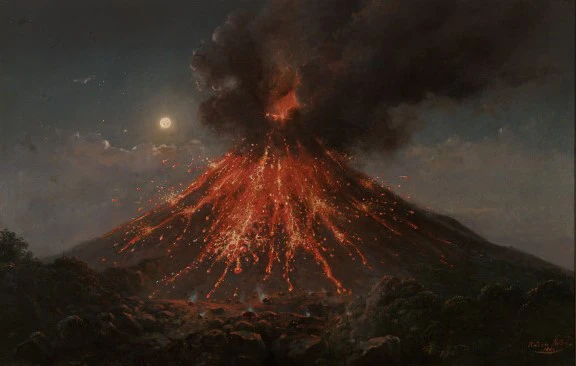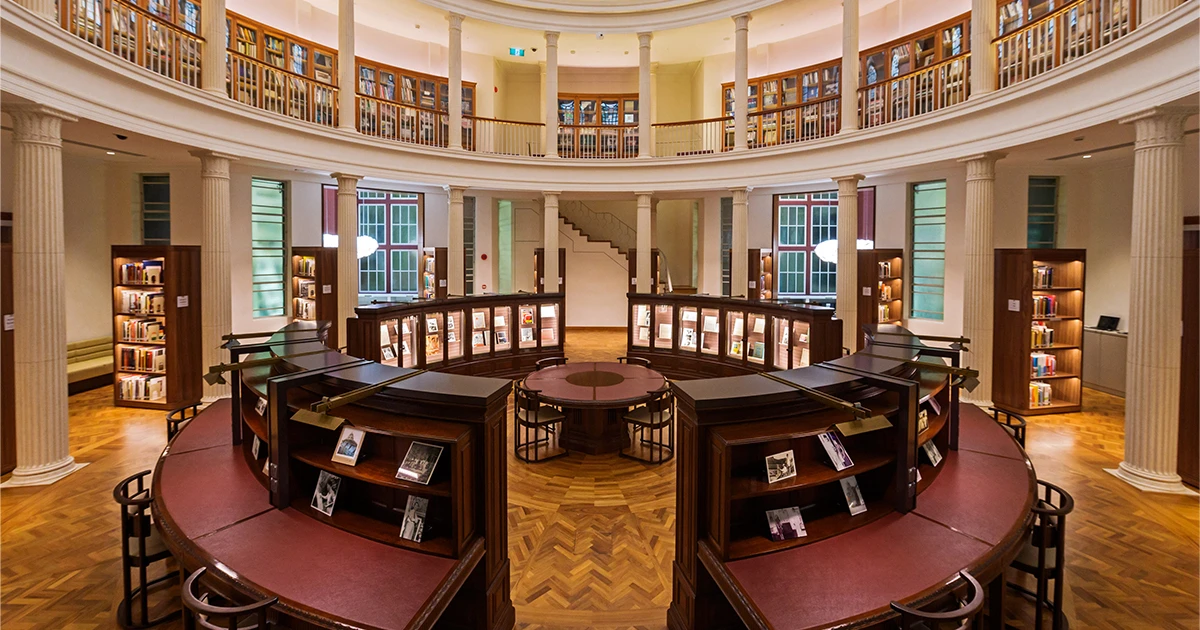Volunteer Voices: Beyond the Gallery
In this run of Volunteer Voices, Ivan Lin (Intern, Community & Access) caught up with Eugene Macalinga, Ma Swan hoo and Queenie Chow, Gallery volunteers who have been generously supporting and engaging with the wider community during this pandemic.

Swan hoo and Queenie have been docents at the Gallery since the inception of the docent programme. Swan hoo is a researcher with a toxicology company and, having been an active volunteer at museums since 2001, a veteran of the museum scene in Singapore. Queenie is a freelance Chinese teacher who makes use of the pockets of time afforded by her work schedule to lead tours at the Gallery as well as other arts and heritage institutions.
Eugene has been a volunteer with the Best Friends of the Gallery programme since 2016. He has a background in academia and clinical work but enjoys stepping outside of his day-to-day responsibilities to support the Gallery as a greeter and wayfinder.
All three enjoy their front-facing roles at the Gallery—interacting, guiding and sharing their expertise with our visitors. However, recent COVID-19-related developments have seen the Gallery put a stop to all its public offerings, such as tours and other events, since April. In this run of Volunteer Voices, we catch up with Eugene, Swan hoo and Queenie who have been generously volunteering and engaging with the wider community during this pandemic.
  | |
How it began
Queenie: I work on a freelance basis, so have more time to contribute to society. One way of doing this is to be a docent, which has been a very rewarding activity. I enjoy engaging with people and it gives me a chance learn, and share our culture through the arts. The arts shapes how we understand our world—the region, the people, our modes of thinking.
Swan hoo: I’d been volunteering for a very long time at other museums in Singapore, and joined the National Gallery in 2015 as part of the pioneer batch of docents. I think Queenie was in the same batch. I was mainly interested in learning more about the artworks in our National Collection.
Eugene: I was roped into volunteering by a friend as we both enjoy art. I also have a friend who works at the Gallery as a curator so I thought, “why not?” As a greeter and wayfinder, I feel like I’m part a visitor’s journey at the Gallery. It’s nice to be the first point of contact to orientate a visitor to the Gallery. I can also suggest exhibitions to visit or places to go. Visitors sometimes ask for my advice when they have an hour to visit. I typically recommend my favorite part of the Gallery, the UOB Southeast Asia Galleries.


On volunteering with the community
Queenie: Singapore had been closely monitoring and controlling the spread of the virus, and in the beginning, it seemed quite successful. But out of nowhere, there was an explosion of the virus in migrant worker dormitories. It was a saddening thought that these men were alone, and caught in a terrible situation in a foreign country. So I responded to another docent who was asking for people to help with donations and calling for the donation of items like soap and toothpaste, as well as second-hand clothes for migrant workers. Together, we spread the message and sent the collected items to the migrant workers being moved from their dormitories to the Singapore EXPO halls. I also made and sold mango jam to my fellow docents to raise additional funds for the workers; the response was very positive!
Eugene: I am involved in both academia and clinical work, teaching anatomy and physiology. After the teaching semester came to a close, I became more consistently involved with volunteering in dormitories and community isolation facilities. In the beginning, I was more involved in the swab operation unit under NUHS (National University Health Services). I later became more heavily involved in serology operations, drawing blood for tests and research. We send the blood to be tested for antibodies, which is part of the process to develop a vaccine.
It is difficult working in full Personal Protective Equipment (PPE) in the heat, whether in gyms or carparks, drawing samples from up to 2,000 patients a day. But at the end of the day, I’m happy to be part of the process.

Swan hoo: As a medical professional, I feel it is necessary for us to wear masks to minimise the potential spread of the virus. However, at the start of the pandemic, there was a severe shortage of surgical masks. I began researching how I could make cloth masks, and started with an initial batch of 26. I distributed these to friends, neighbours and family members. Some days later, The Straits Times reported on a community project called Masks Sewn With Love, to make masks for those in need. The project is true to its name–I put in a lot of time and effort to make these masks as perfect as possible. I sewed more than 200 masks in total.
My greatest satisfaction was introducing this project to my sister-in-law's mother, a lady in her late 80s with dementia. She had been going regularly to an Elderly Day Centre but because of the Circuit Breaker, was feeling restless at home. I thought mask sewing would keep her focused and calm, and so over video chat, I showed her how to sew these masks. It was a pleasure to receive photographs of her with her first two masks. She later completed many more, and also introduced Masks Sewn With Love to her neighbours. It is a simple project but continues to galvanise many members of society to contribute to this fight against the pandemic.
On the value of art in a pandemic
Queenie: What does art mean to a community? Be it painting or making music, I think art is a reflection of how we think and express ourselves. In this difficult time, people face a host of challenges and anxieties. Now confined at home, we are isolated from the outside world, and might only have limited company. Such situations can bring up emotional tension, and I think art can be a good release. Creating art helps express the things you can’t put in words, and could also be a way to see past our current circumstances. It gives us perspective—a moment away from all the stress and worries of the day.

Swan hoo: Yes, contrary to a recent survey on art, I think art is very essential. In this time of hardship, creating or appreciating art gives your mind some form of relief. When you watch performances or listen to music, you are transported into a world different from the difficult one you currently live in—it can be quite magical.
You also open yourself up to conversations, be it with yourself or your friends. It is refreshing to engage in conversations unrelated to what is happening now [the pandemic]. In that sense, I think art can be quite therapeutic.
Eugene: Art can be defined in so many ways. Even what might be considered “entertainment” like films, can be art. Continuing on Swan hoo’s point, I think art is important for overall mental health. If you believe the theory that one can be either left- or right-brained, I would argue that most of the work that we carry out in a day activates mainly the left-brain as it can be very methodological and step-by-step. Engaging in something creative activates the right side of our brain. We need to strike a balance; if art activates a part of our brain that we usually don’t use, then I think it should be part of our daily lives.
A question on art: a work that resonates with you now

Queenie: Georgette Chen’s Lotus in a Breeze. I actually plant lotuses. When it’s quiet around me, I try to stay in place and look at things from a different perspective. I sometimes stand in my balcony to watch how the leaves sway in the wind and the light changes. In the morning, when a breeze comes and the big leaves wave and the flowers bloom, it’s really gorgeous. And I think her painting really captures the beauty of the plant. When we are quiet, and stationary, we can observe our surroundings and feel the beauty of nature.

Swan hoo: In UOB Southeast Asia Gallery 3, there are Mooi Indie works featuring beautiful landscapes with wide open spaces. In such vast expanses of land, I imagine there would be a very low chance of contracting the COVID-19 infection. In a densely populated city like ours, we are at a higher risk each time we take the MRT or go to restaurants. I particularly like Wakidi's Ngarai Sianok. It makes me feel like I want to be out there to breathe in the fresh air, without having to breathe through a mask. Oh, to have such freedom!


Eugene: The work of Fernando Amorsolo, as his paintings are mostly of the outdoors, capturing the daily lives of people. When we were in lockdown, I was constantly thinking about when it would end. Just looking at those paintings gave me hope that the situation would come to an end. While we remain cautious about going out now, these paintings are enough for me. Apart from the National Gallery Singapore, Amorsolo has many works in the National Art Gallery in National Museum of the Philippines. I really like them.
Another artist whose works I like is Raden Saleh. He painted the eruptions of Mount Merapi by day and night. The works remind me of the fact that this virus will run its course, much like these eruptions. And although both are terrible disasters, people pick up the pieces in the aftermath and move forward. It makes me think that even with something as devastating as COVID-19, we will probably progress to a new “normal.”












